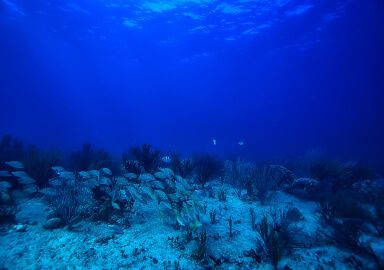Crab
Crabs are ten legged crustaceans with one pair of legs which have been modified into strong claws. Many species of crabs are important in recreational and commercial fisheries.
View 10 listings
10
listings
–
price starting from
3
countries
Where and When?
Blue crabs are found from Cape Cod down the American Atlantic seaboard as far as Argentina, mostly in estuaries and bays - especially large bays like Chesapeake Bay. Blue crabs are not found in deep water but Dungeness crabs, which are found in Alaskan waters southwards to at least Santa Barbara in California, are found from the intertidal zone down to deep offshore water. Both species are often associated with “seaweed” beds and muddy or sandy substrates. Blue crabs used to be extremely abundant and were an important food source around places like Chesapeake Bay and areas of Louisiana. Dungeness crabs have been described as the “State crustacean” in Oregon. While both crab species may be caught year-round there are periods of increased catches. The best time of year for blue crabs, in Louisiana and Florida, is generally seen as May to September, while Dungeness crab season is usually from early November to late June. Most crabs, including both blue and Dungeness, are nocturnal. Active crab fishing is, however, often not easy after dark but traps and nets may sometimes be set and left overnight.
About Crab
While there are multiple species, sizes and forms of crabs and they are of varying importance in diverse fisheries throughout the world, only two species are of real recreational importance in the North American context. The blue crab (Callinestes sapidus), from the Atlantic seaboard and the Dungeness crab (Metacarinus magister), from the Pacific coast, dominate the American recreational crab scene. The species are similar in most ways and have “typical” crab shapes, however the blue crab has large sharp spikes protruding from the sides of its carapace. Both are generally bluish in color, with the east coast one being lighter blue overall.
Like most crabs, these species are mostly predators. They feed on worms, clams and small fish but the blue crab also eats vegetation and carrion. Neither species is very large, with the blue crab attaining about 23 cm. (9 in.) in about 10 years, while the Dungeness crab can reach 25.4 cm. (10 in.). Most crabs caught, however, are significantly smaller than these sizes. Blue crabs are mostly an estuarine and shallow water species, while Dungeness crabs range from the intertidal zone to depths of more than 250 m. (820 ft.), but are commonest at around 50 m. (164 ft.). Both display complex mating and breeding activities and undergo local and sometimes large-scale migrations.
How to Catch?
Both blue and Dungeness crabs are targeted by substantial commercial fisheries that use mostly large comprehensive traps. Recreational fishermen, on the other hand, can use almost anything - from bare hands to complicated traps using specific baits. The blue crab recreational fishery is well developed with many thousands of enthusiasts. The internet is full of videos of how to catch crabs, design traps, nets, spears and telling you the best bait for them. The truth is that anyone can catch some blue crabs with the simplest equipment and it is free, if the catch is for your own use. The commonest methods are spearing and netting individuals, using baited lines to draw crabs to hand nets or a wide variety of mostly metal mesh, baited crab traps. Leaving baited traps overnight usually has good results and the most common baits used are chicken or fish, provided that it is old, smelly but still has some form for the crab to hold onto. Dungeness crab fishing is controlled, and a permit is needed everywhere except for a few public jetties. In shallow water individual capture or spearing can succeed but trap fishing is popular and, in the deeper waters, is essential. In many areas of the world there are few crabs that have created a specific recreational fishery and North America is very fortunate to have two such species.








